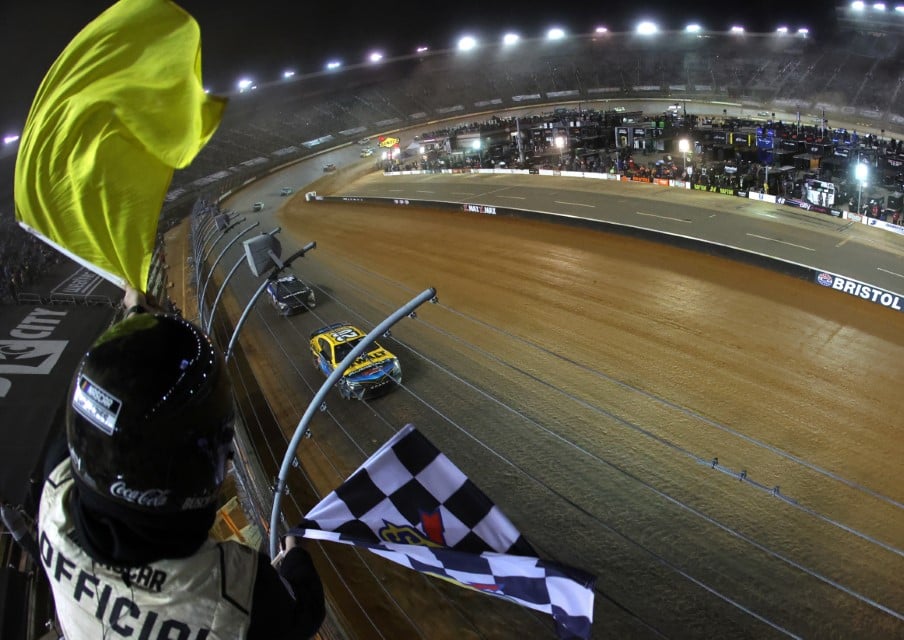Welcome to the latest edition of Monday Morning Pit Box, where we break down the crucial calls that shape the outcome of each week’s race. We take a look through the minds of those on pit road and, at times, call atop race control as well.
As noted above, there are times in this space where we dig into calls made during each week’s NASCAR Cup Series race from within race control.
Easter Sunday is one of those times.
During Sunday night’s (April 9) race on the Bristol Motor Speedway dirt, the caution flag officially waved 14 times. But over the course of the race, the timing and decision-making of what constituted a yellow flag thrust open the door for debate.
In one instance, a solo spin would keep the field green as nobody impacted a car in distress. At the same time, another very similar crash, again for just a single car, would bring out the yellow.
For example, over the course of one five-lap period, Joey Logano broke an A frame, smoking heavily in the middle of the dirt racing groove. AJ Allmendinger also hit the wall during this stretch while Michael McDowell did a full 360, spinning out and coming to a complete stop. Despite each of these instances, the caution flag was not thrown until lap 102 when Ryan Preece lost control and spun out on the backstretch, pointing in the opposite direction.
What made the difference here? Only one small group of people knows the actual rationale for what should constitute a caution at this level of racing: NASCAR officials sitting in race control.
Was there a desire to avoid a race being marred by caution flags all over again? Two races ago, the back half of the race at Circuit of the Americas became a Demolition Derby on restarts; 17 of the race’s 75 laps were run under the yellow. Of the seven races before Bristol this season, four have had at least eight caution flags, several of them forcing races to unexpectedly end in NASCAR Overtime.
Series officials cannot be blamed for not wanting numerous caution flags to overshadow the racing on the track. But while it was a welcome sight for a mere spin not being a cause for caution, the lack of consistency was head-scratching. In the end, it was a judgment call; until the sport computerizes in-race decisions with a robot, or makes clear, detailed rules on what causes a yellow, the human element of officiating will leave them open to criticism.
Bell the big winner from staying out
The dirt surface was not the only…
Click Here to Read the Full Original Article at …

